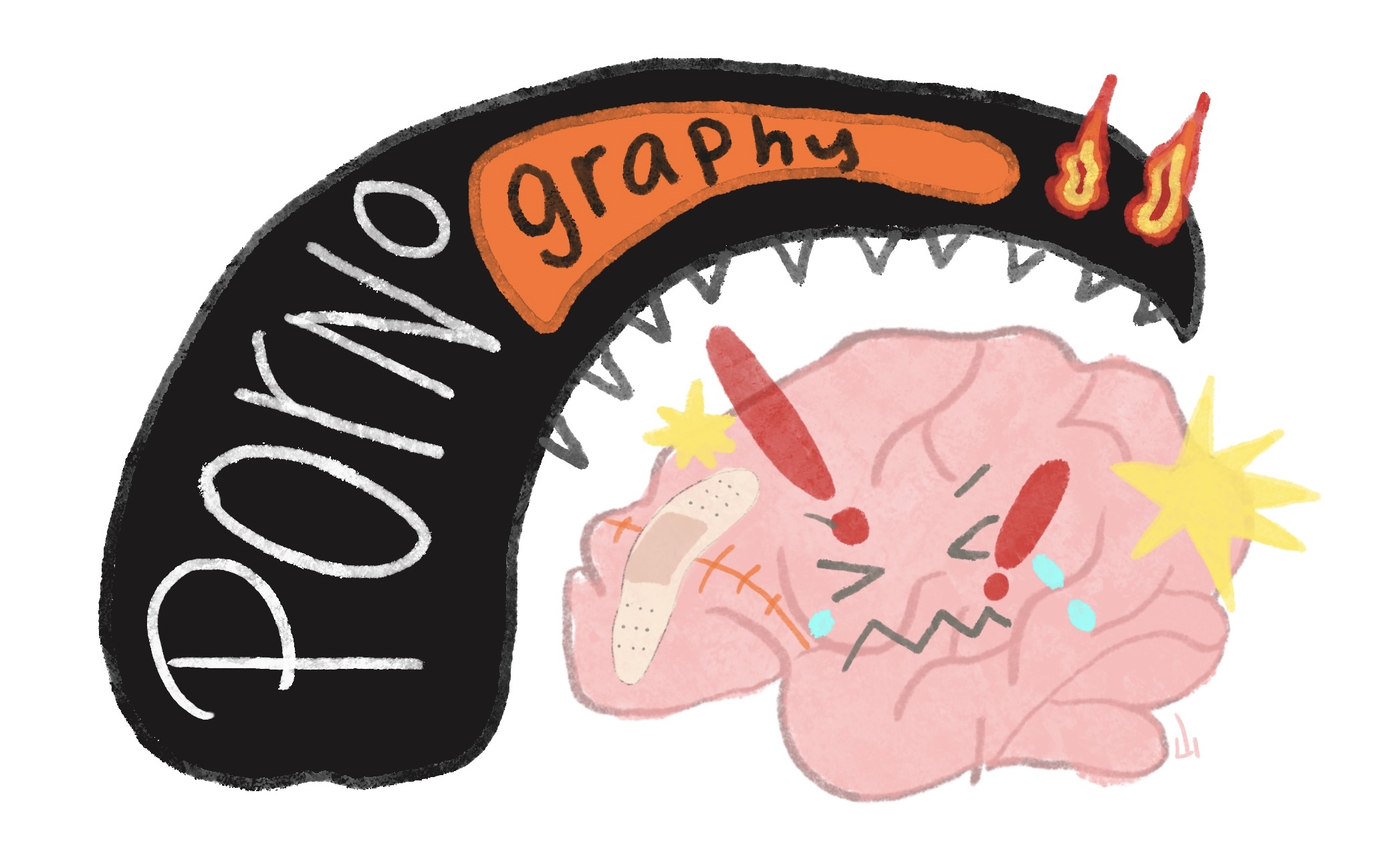The destructive impacts of an all-too-common addiction
Understanding the effects of pornographic addiction on the developing brains of students.
Historically, it was much more difficult to consume pornographic material due to the limitations and challenges of accessing it. However, the internet era has made accessing pornography as easy as turning on the TV to watch a regular cartoon show.
Studies show that the brain does not fully develop until around 25 years of age. As such, students with their still-growing brains are more susceptible to the neurological and physiological changes that come from pornography addictions. Understanding the dangers associated with pornography is the first step in putting an end to the addiction altogether.
Destruction of the brain
Frequent viewing of pornography has been proven to damage vital brain regions for individuals. Research demonstrates that pornographic addiction leads to memory deficits. Important attributes of life such as decision-making and goal-orientation also worsen for individuals the deeper their addiction goes.
Dopamine and other neurochemicals associated with reward and pleasure release when individuals consume porn. However, over time, watching pornography disrupts the natural reward system, which leads to addictive behaviours among viewers. When individuals become addicted, their cognitive functions begin to deteriorate, leading to the presented diminishing memory functions.
Other studies explain that changes in dopamine transmission can facilitate depression and anxiety. Porn consumers have reported greater depressive symptoms, lower quality of life, and poorer mental health compared to non-viewers.
Furthermore, individuals who no longer enjoy the process still find themselves wanting and needing more porn, which might explain why they feel negative emotions of depression and anxiety as they can’t seem to escape the dark hole.
MRI imaging has revealed that porn addicts faced a reduction of grey matter, which is an important tissue within the brain and spinal cord that affects day-to-day activities. A reduction in this area results in poor movement control of the body, memory loss, and cognitive impairments such as difficulties with speech, attention, reasoning, and judgement.
Porn consumption has also been associated with the disintegration of the prefrontal cortex, the brain region storing executive functions such as morality, willpower, and impulse control.
An erosion of the prefrontal cortex results in individuals behaving compulsively. They make poor decisions, lose their willpower to fight against addiction, and live ridden by shame and guilt. This furthers their spiral into depression and anxiety.
Covenant Eyes, an advocacy group that seeks to raise awareness for the dangers of pornography, expressed concerns of fatigue, memory loss, and a lack of concentration stemming from addiction. As one anonymous testimony revealed, “‘I really need your help on this because it’s been affecting my mind, not able to concentrate and also forgetting things easily at work and at home.’”
Fears such as this outline the permanent effects porn addiction can have on children and young adults for the long-term if the right steps are not taken to prevent further health deterioration.
How to quit the habit
Understanding that quitting is hard is the first step for any addict. There will be withdrawal symptoms such as difficulty sleeping, restlessness, an increase in irritability, anxiety, depression, and various more. However, this doesn’t mean it’s impossible.
Seeking professional help is highly encouraged. Many mental health professionals recognize porn addiction as a determinantal problem which makes conversing with them much easier. They will help provide recovery plans and programs that treat the physical, mental, and emotional needs of the patients.
It’s understandable that some individuals may feel ashamed or guilty to reach out for professional help. Here’s a few ways people can try to overcome it individually or until they feel confident enough to seek professional guidance.
They can start by believing in their capabilities to quit no matter how many times they may relapse. That alone will help them navigate through times of guilt and shame. Replace the habit with more productive activities, like meditation and exercise. So that the reward system within the brain rewires to accept healthier dopamine activation.
Another step would be to find a supportive system. Be it friends or family, people around you can aid in times of relapse or temptation. Ultimately, it’s important not to give up and to understand the repercussions of continuing.
Sometimes, temporary pleasure only brings forth harm and recognizing that danger before it’s too late is vital to living a healthier lifestyle.

